Cover image of Lark-like Bunting by Les Underhill – Vanrhynsdorp district, Western Cape – BirdPix No. 274357
Buntings belong to the Family: EMBERIZIDAE. The buntings are a group of Old World passerine birds forming the genus Emberiza, which is the only genus in the family. The family contains 44 species. They are seed-eating birds with stubby, conical bills, comparatively long tails, and short legs. The feet are relatively large for scratching on the ground.
Identification
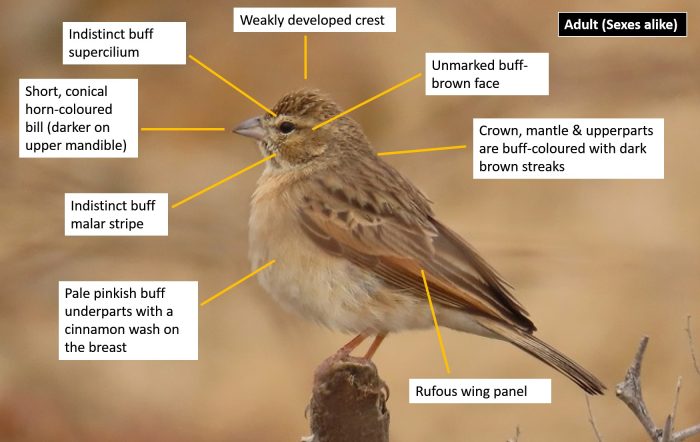
Willowmore district, Eastern Cape
Photo by Cobus Elstadt
The Lark-like Bunting is a small, drab species. Adults have an overall light buffy brown appearance. The crown and nape are buff-brown with feint olive-brown streaks. The crown is sometimes raised into a weak crest. The face is buff-brown and unmarked. The supercilium and moustachial stripe are pale buff. The remainder of the upperparts are buff-coloured with dark brown streaks, especially on the mantle. The rump is plain buff-brown and the longish tail is dark brown, each tail feather with buff edging. The feathers in the folded wing are brown with buff edges except for the coverts which are pale rufous. The underparts are pale pinkish buff with a cinnamon wash on the breast, fading to pale buff on the lower belly and undertail coverts. The small, conical bill has a dark horn-coloured upper mandible and a paler lower mandible. The eyes are dark brown and the legs and feet are pinkish-brown. The sexes are alike.
Immature birds closely resemble the adults but are paler with a slightly mottled breast.
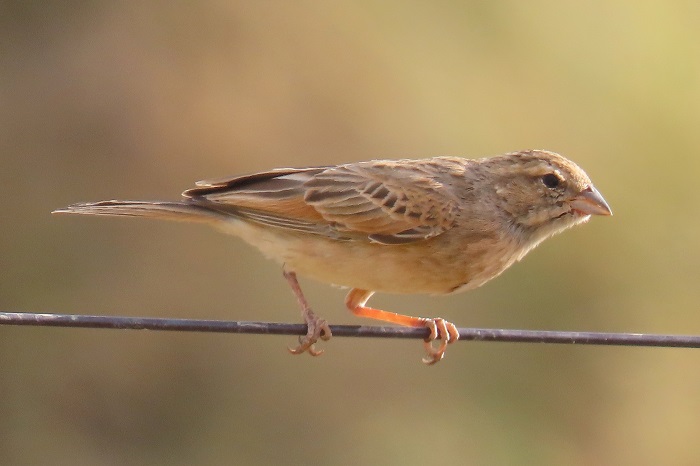
Kleinpoort district, Eastern Cape
Photo by Cobus Elstadt
The Lark-like Bunting has a superficial resemblance to larks, hence the common name, but can easily be mistaken for a host of small brownish birds. The Lark-like Bunting is best separated from larks by its short, conical bill, longish tail, short legs and hopping gait.
Buntings generally have shorter legs and longer tails than other similar seed eating birds. The Lark-like Bunting is best identified by its characteristic ‘chut’ call-note, usually given in flight.

Hopetown district, Northern Cape
Photo by Lappies Labuschagne
Status and Distribution
The Lark-like Bunting is a common to very common nomad. It is near-endemic to southern Africa, extending marginally into Angola where it occurs on the coastal plain as far north as Benguela. It is sometimes also recorded as a rare vagrant in Zambia and the Democratic Republic of the Congo.
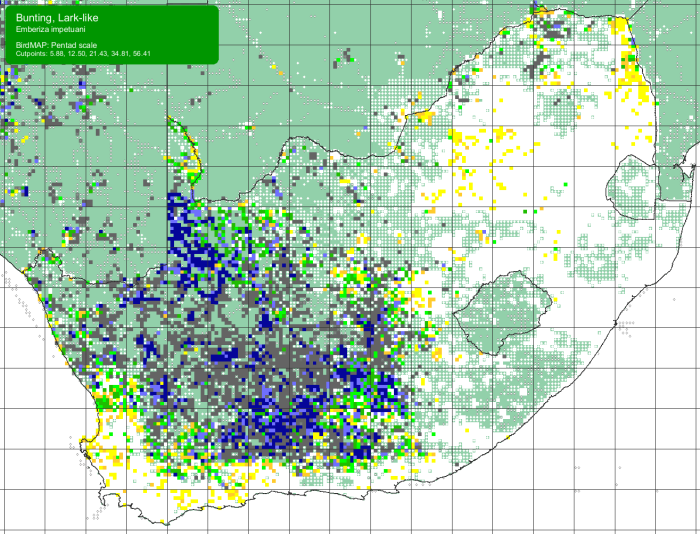
Details for map interpretation can be found here.
The Lark-like Bunting is widespread in southern Africa, especially in the arid and semi-arid regions of Namibia, Botswana and western South Africa. It is subject to periodic eruptions into areas where it does not usually occur such as southern Zimbabwe and the eastern lowveld of South Africa, mostly during very dry years. The Lark-like Bunting is a sporadic visitor to the coastal lowlands of the Western Cape, varying in abundance between years.
There is no evidence that the range of the Lark-like Bunting has recently changed. It is not considered threatened and is common in a wide range of habitats.
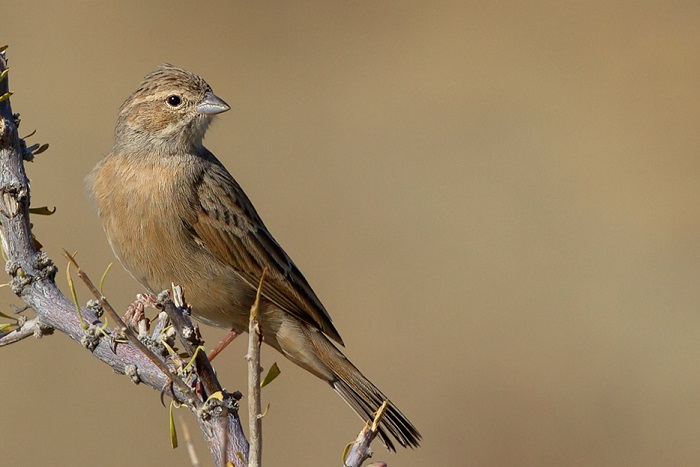
Near Mariental, Namibia
Photo by Gregg Darling
Habitat
The Lark-like Bunting inhabits Karoo shrublands, desert grassland, arid and semi-arid savanna, sparsely vegetated rocky ridges, dry watercourses and grass covered sand dunes. It also occurs in degraded or overgrazed habitats including erosion gullies, old fields and road verges. Occasionally found in gardens on farms and in Karoo villages. The Lark-like Bunting occurs mostly in strandveld during irruptions into the coastal lowlands of the Western Cape.
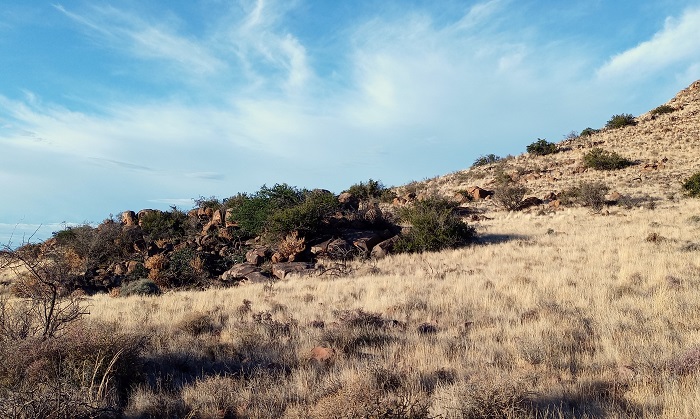
Carnarvon district, Northern Cape
Photo by Ryan Tippett
Behaviour
Lark-like Buntings are mostly gregarious, in flocks from 6 to many hundreds of birds, especially at water. They are occasionally also seen in pairs when breeding. Regularly associates with sparrowlarks and other seed eaters like canaries. The Lark-like Bunting is often confiding and flushes reluctantly, usually not flying far. The flight is erratic and undulating.

Carnarvon district, Northern Cape
Photo by Karis Daniel
The Lark-like Bunting is highly nomadic in response to rainfall, often appearing and disappearing overnight. Their arrival after rain corresponds with peak plant growth and seed production.
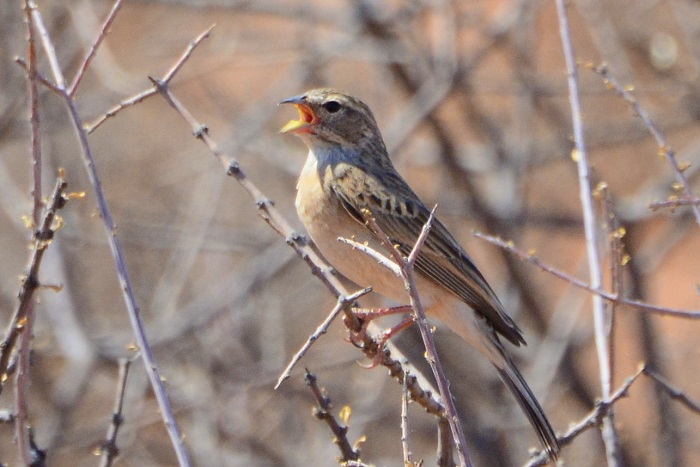
Near Kenhardt, Northern Cape
Photo by Ryan Tippett
Forages on bare, stony and sparsely vegetated ground, sometimes jumping up to reach grass seeds. They generally hop but sometimes walk in a lark-like fashion. The Lark-like Bunting feeds on seeds and small insects. They mostly eat grass seeds, also cereals like wheat, as well as the seeds of forbs and small shrubs. Insect prey includes termite alates, small caterpillars and beetles etc.
They need to drink regularly and are usually not found too far from water. They often drink in the company of other small, granivorous birds.
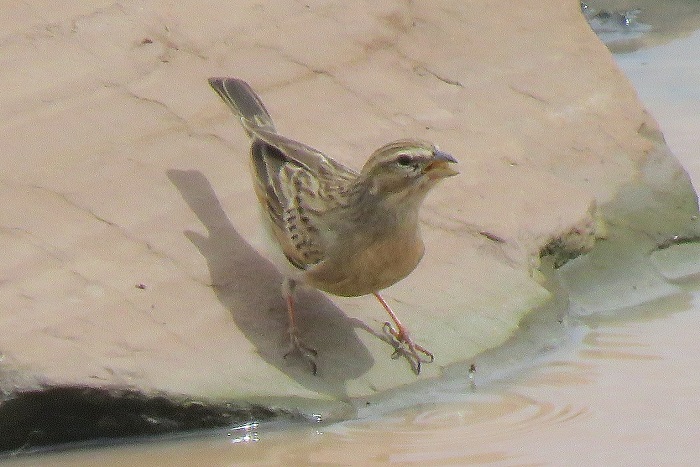
Near Three Sisters, Western Cape
Photo by Les Underhill
The Lark-like Bunting is an opportunistic and irregular breeder due to the highly variable and erratic rainfall of arid areas. Breeding generally peaks in spring in the winter rainfall areas and in late summer and autumn in summer rainfall regions. The Lark-like Bunting is monogamous and is a solitary nester, although nests are sometimes less than 20m apart. Nests are placed on the ground, often under a shrub or at the base of an overhanging rock or stone. The nest is a shallow cup of grass and roots and is built entirely by the female.
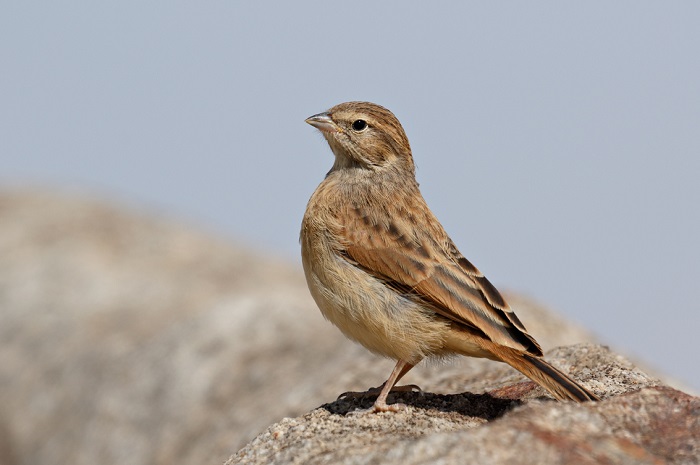
Erongo, Namibia
Photo by Katharina Reddig
Clutch size varies from two to four eggs. The egg colouration may be white or pale greenish to bluish white, with variable red, brown or grey spots, speckles or blotches. The incubation period takes up to 13 days. The newly hatched young are undescribed and the nestling period lasts for another 12 to 13 days. The predation rate on eggs and nestlings is often very high.

Near Aggenys, Northern Cape
Photo by Philip Nieuwoudt
Further Resources
Species text in the first Southern African Bird Atlas Project (SABAP1), 1997.
The use of photographs by Cobus Elstadt, Gregg Darling, Karis Daniel, Katharina Reddig, Lappies Labuschagne, Les Underhill and Philip Nieuwoudt is acknowledged.
Virtual Museum (BirdPix > Search VM > By Scientific or Common Name).
Other common names: Vaalstreepkoppie (Afrikaans); Lerchenammer (German); Bruant des rochers (French); Leeuwerikgors (Dutch); Escrevedeira-cotovia (Portuguese).
List of bird species in this format is available here.
Recommended citation format: Tippett RM 2024. Lark-like Bunting Emberiza impetuani. Biodiversity and Development Institute. Available online at https://thebdi.org/2024/07/24/lark-like-bunting-emberiza-impetuani/
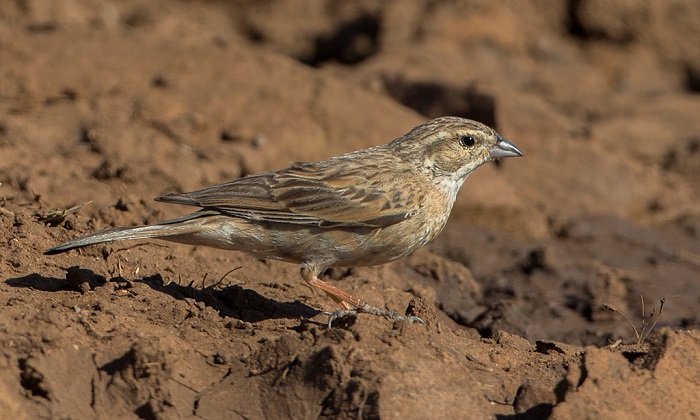
Mountain Zebra National Park, Eastern Cape
Photo by Gregg Darling

